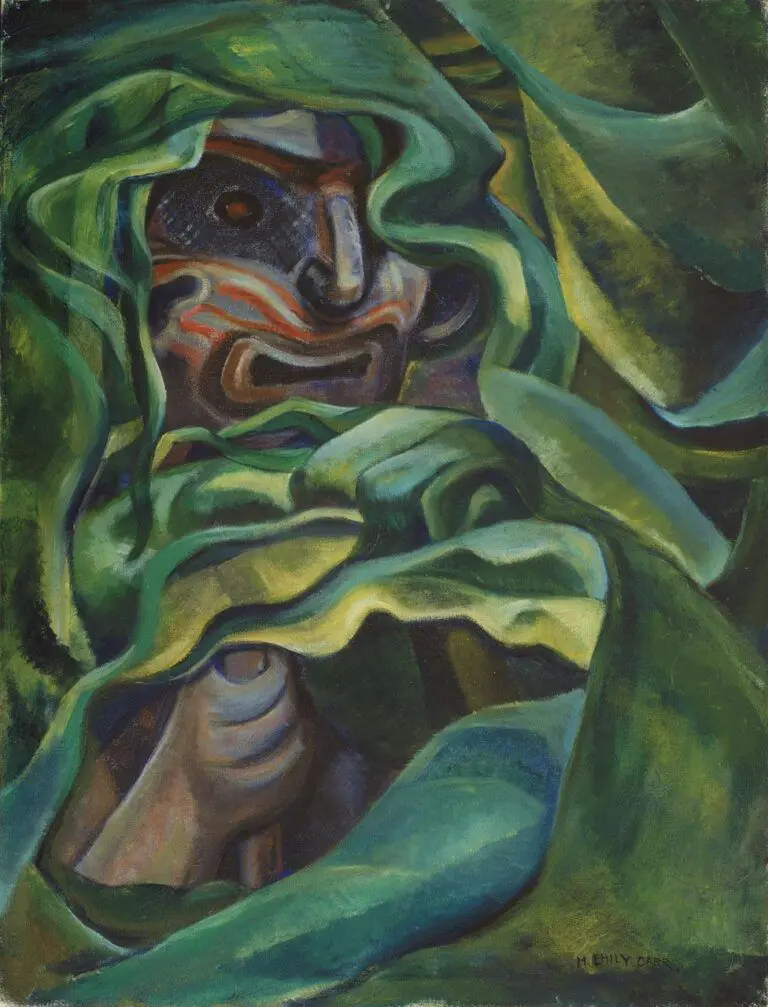Get to Know Emily Carr
Emily Carr’s celebrity status in Canada would come as a great shock to her because, for most of her life, she felt like an outcast.
Get to know this iconic BC artist, from her early education to how the Vancouver Art Gallery now holds one of the most significant collections of her work in the world.
Discover Carr’s works up close and in person at the Gallery now in Emily Carr: Navigating an Impenetrable Landscape, on view until January 4, 2026.
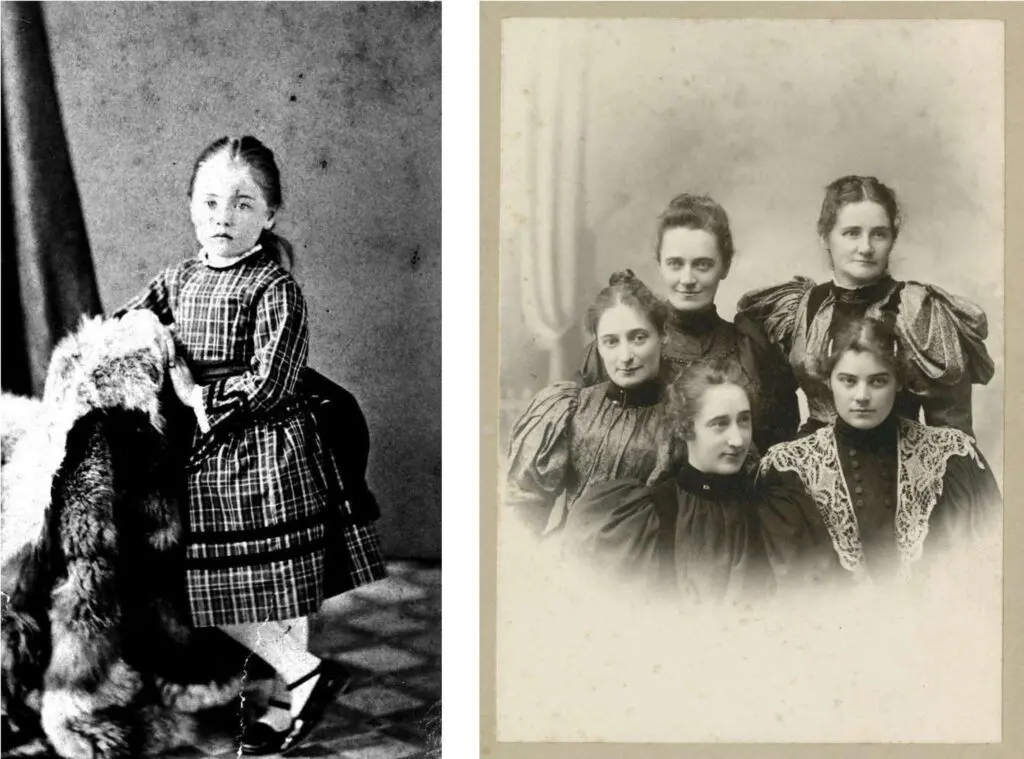
(left) Stephen Allen Spencer, Emily Carr as a child at age four or five, 1876, BC Archives H-03313; (right) Emily Carr (lower right) and her sisters; clockwise from Emily (Small): Alice (Middle), Lizzie (Big), Edith (The Elder) and Clara (married to John Nicholles), Skene Lowe, ca. 1894-1897, BC Archives A-02037
Emily Carr was born on December 13, 1871, in Victoria, BC, to Richard Carr and Emily Saunders, the fifth child in a family of five girls and one boy.
Carr began art lessons as a child, and, during her teens, her sensitivity and devotion to art isolated her from her sisters, who failed to understand her desire to pursue painting. Despite her family’s lack of support, Carr remained steadfast in her commitment to art.
In her teens, after the death of her parents, Carr rejected the authority of her overbearing sister and approached her legal guardian to secure funds to attend the California School of Design.
Carr spent three years in San Francisco, where she received a traditional education in the depiction of still life and landscapes.
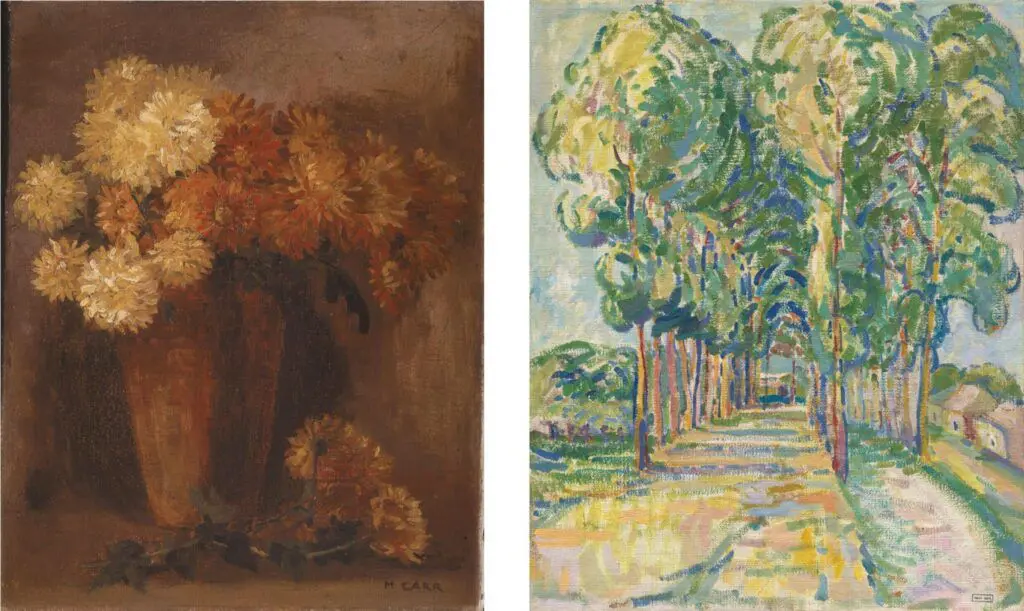
(left) Emily Carr, Chrysanthemums, c. 1900, oil on canvas, Collection of the Vancouver Art Gallery, Vancouver Art Gallery Acquisition Fund, VAG 88.11; (right) Emily Carr, French Landscape, 1911, oil on canvas, Collection of the Vancouver Art Gallery, Donated by the Estate of Anna K. Jetter, VAG 2004.12.13
After returning to Victoria for a brief period, Carr travelled to England to study art with several British watercolourists. During this time, she most likely began sketching outdoors.
Her instruction in France, however, proved to be most inspiring. She was introduced to the bold colours and large brushstrokes of French Post-Impressionism styles such as Fauvism.
With this new approach to painting and renewed confidence, Carr returned to Canada.
Upon her return to Vancouver, Carr was committed to representing Indigenous cultures of BC, an exercise that she had initiated in 1907, with renewed vigour.
In 1912, she embarked on a six-week sketching trip to Haida Gwaii, where she produced a number of watercolours and corresponding studio canvases.
These works were met with mixed reception and had limited sales. Dejected, Carr returned to Victoria to make a living by running a boarding house, raising sheepdogs, making pottery and giving art lessons.
She nearly stopped painting all together over the next decade.
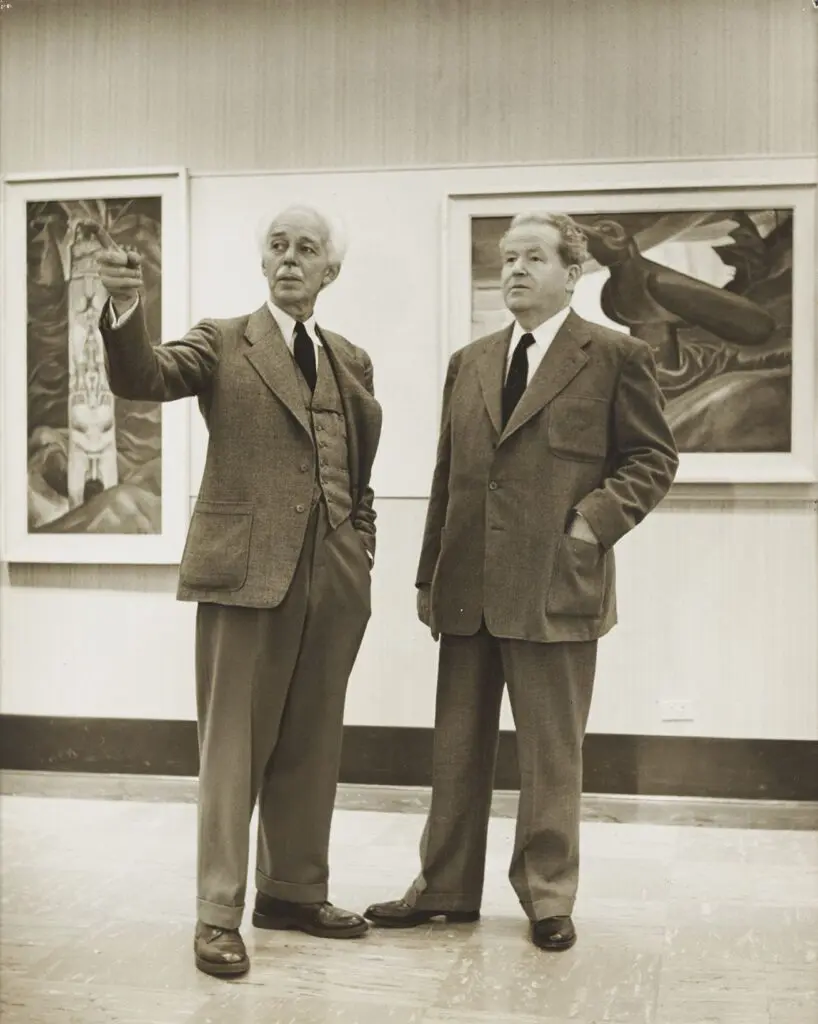
Lawren Harris and Ira Dilworth in one of the Emily Carr Memorial Galleries, 1951, Vancouver Art Gallery Photography Archives
In 1927, Carr’s work was included in a National Gallery of Canada exhibition, and she first met the Group of Seven. She found the work of Group member Lawren Harris to be particularly inspiring, as was his encouragement and his declaration that she was “one of them.”
She returned from Ottawa to begin the most productive period of her career, creating the powerful canvases for which she is best known. She also began a lifelong friendship with Harris, who acted as her mentor and spiritual guide.
When Lawren Harris questioned Emily Carr about how she planned to distribute her paintings after her death, she allegedly replied:
“Give them to the old folks’ home. I suppose they would put them in the basement, and there they would rot.”
Worried about the preservation of Carr’s work, Harris worked with Ira Dilworth, who became Carr’s literary executor, to devise the Emily Carr Trust collection.
Carr selected a group of paintings to bequeath to the people of BC. She chose the Vancouver Art Gallery to house her Trust.
At the end of her life, Emily Carr slowly began to achieve commercial and critical success, yet the renown she enjoyed barely compares to today’s esteem.
After suffering a series of heart attacks, Carr died in Victoria on May 2, 1945, after checking herself into St. Mary’s Priory to rest.
Carr’s life is irrevocably connected with the Pacific Northwest Coast, the place where she was born and where she spent the majority of her life.
Her independence as a woman when domesticity was expected; her resolve to travel frequently and unaccompanied; and her devotion to art despite the obstacles, distractions and criticism remain inspirational.
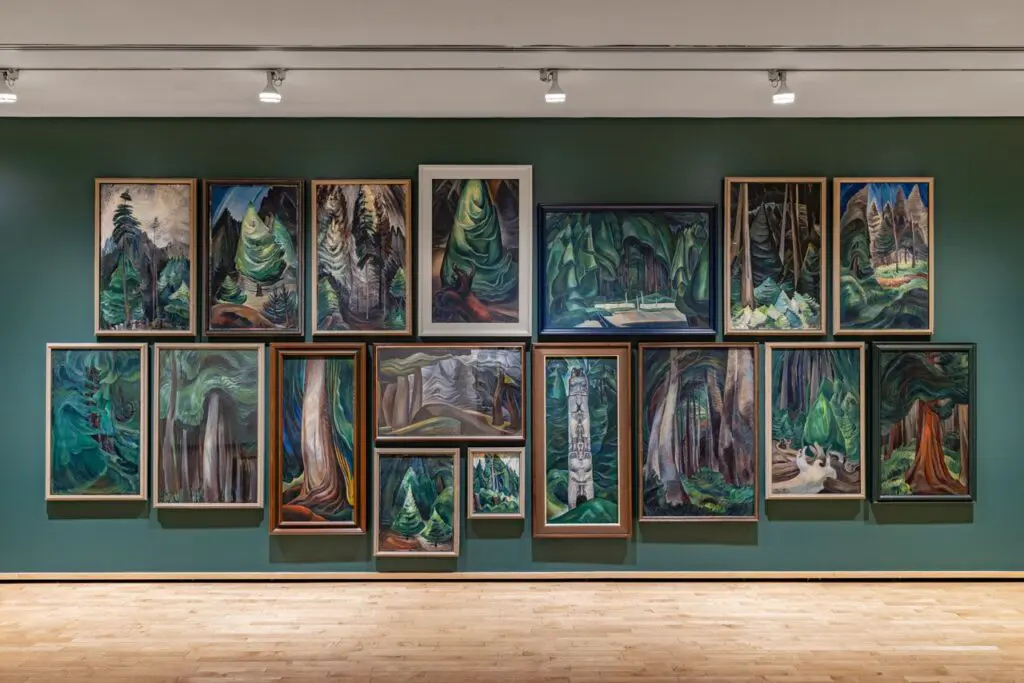
Installation view of Emily Carr: Navigating an Impenetrable Landscape, exhibition at the Vancouver Art Gallery, January 25, 2025 to January 4, 2026; Photo, Vancouver Art Gallery

